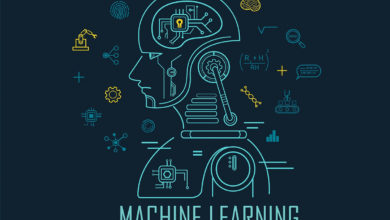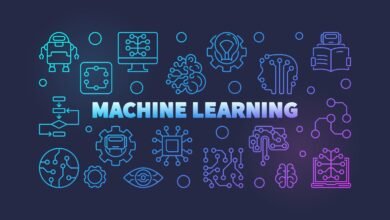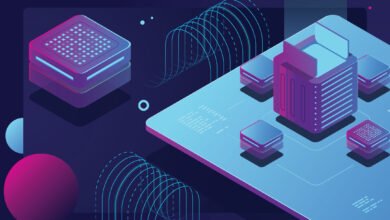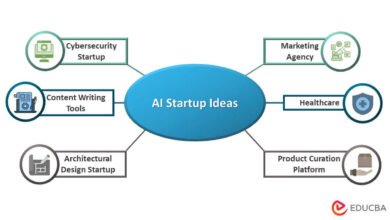
The technological landscape of 2025 marks a pivotal moment where edge AI emerges as the cornerstone of next-generation artificial intelligence applications. As businesses and industries grapple with unprecedented data generation rates, 75% of enterprise data is expected to be processed at the edge by 2025, away from traditional centralized data centers. This dramatic shift represents more than just a technological trend—it’s a fundamental reimagining of how artificial intelligence intersects with real-time processing capabilities.
Edge AI applications are transforming everything from autonomous vehicles requiring split-second decision-making to smart healthcare devices monitoring patients in real-time. Unlike traditional AI models that rely heavily on centralized cloud processing, edge AI brings computation closer to the data source, resulting in reduced latency, improved security, and lower bandwidth usage. The convergence of 5G networks, advanced AI chips, and IoT devices creates an unprecedented opportunity for organizations to harness intelligence exactly where and when it’s needed most.
The implications stretch far beyond mere performance improvements. With over 75 billion connected devices expected by 2025, the traditional cloud-centric approach becomes increasingly unsustainable. Machine learning at the edge enables devices to process massive data volumes locally, eliminating the bottlenecks and privacy concerns associated with cloud-dependent systems. Industries ranging from manufacturing to healthcare are already witnessing transformative benefits, with edge computing AI solutions delivering sub-millisecond response times critical for mission-critical applications.
This comprehensive exploration examines how edge AI technology is reshaping the competitive landscape in 2025, diving deep into the key trends, breakthrough applications, and strategic considerations that will define the next era of artificial intelligence deployment. From neural processing units embedded in everyday devices to sophisticated edge AI platforms orchestrating entire smart city infrastructures, we’ll uncover the forces driving this technological revolution and the opportunities it presents for forward-thinking organizations.
Understanding Edge AI Technology in 2025
The Foundation of Edge AI Architecture
Edge AI computing represents a fundamental paradigm shift from traditional centralized artificial intelligence processing to distributed intelligence at the network periphery. Edge AI refers to the integration of artificial intelligence algorithms and models directly into devices or edge devices that process data locally rather than relying on centralized cloud servers. This architectural transformation enables organizations to deploy sophisticated machine learning models directly on IoT devices, industrial sensors, autonomous vehicles, and smart city infrastructure.
The core infrastructure supporting edge AI applications consists of three essential layers: endpoint devices generating data, edge processing nodes performing AI computations, and orchestration systems managing the entire ecosystem. Graphics Processing Units (GPUs) are widely used in edge devices to accelerate AI tasks, especially in applications requiring high computational power, such as image recognition or video analysis. Additionally, specialized hardware like Tensor Processing Units (TPUs) and neural processing units provide optimized performance for deep learning inference at the edge.
Key Components Enabling Edge AI Success
The success of edge AI technology in 2025 stems from several technological convergences that have reached critical mass. AI accelerators and specialized chips now deliver sufficient computational power for complex machine learning algorithms while maintaining energy efficiency constraints crucial for battery-powered devices. Edge computing fulfills the sub-millisecond requirement of 5G applications and reduces energy consumption by around 30-40%, contributing up to 5x less energy consumption compared to accessing the cloud.
Modern edge AI platforms integrate seamlessly with existing enterprise infrastructure through sophisticated software frameworks that handle model deployment, version management, and performance monitoring. These platforms support both AI inference and increasingly, local model training capabilities that enable devices to adapt and improve their performance based on local data patterns without compromising privacy or requiring constant cloud connectivity.
Revolutionary Applications Transforming Industries
Smart Cities and Urban Intelligence
Edge AI applications are fundamentally transforming urban environments through intelligent infrastructure that responds instantly to changing conditions. Smart cities leverage 5G-enabled edge networks to power applications like intelligent traffic management, public safety, and efficient energy consumption. Traffic management systems equipped with computer vision capabilities process real-time video feeds from thousands of cameras, optimizing signal timing and routing to reduce congestion by up to 35%.
Public safety applications showcase the most compelling edge AI use cases, where surveillance systems powered by real-time AI processing can detect suspicious activities, identify individuals in emergency situations, and coordinate emergency response efforts with minimal latency. Environmental monitoring networks utilize distributed sensors running machine learning at the edge to track air quality, noise levels, and energy consumption patterns, enabling cities to make data-driven decisions for sustainable development.
Autonomous Vehicles and Transportation Revolution
The autonomous vehicle industry represents perhaps the most demanding application of edge AI technology, where failure to process information in milliseconds can have life-threatening consequences. Autonomous vehicles require 4000+ TOPS of processing power and need edge computing to provide real-time processing capabilities for self-driving cars to make critical decisions instantly. Modern vehicles integrate multiple AI chips and specialized processors to handle simultaneous tasks including object detection, path planning, and behavioral prediction.
Edge AI computing in transportation extends beyond individual vehicles to encompass entire transportation ecosystems. Connected vehicle networks share real-time traffic data, hazard information, and optimal routing suggestions through edge AI platforms that process information locally before distributing insights to relevant vehicles and infrastructure systems. This cooperative intelligence approach significantly enhances safety while reducing the computational load on individual vehicles.
Healthcare and Medical Innovation
Healthcare represents a critical frontier for edge AI applications where privacy, reliability, and real-time processing converge to create life-saving innovations. Edge computing facilitates real-time medical diagnoses, remote patient monitoring, and AI-assisted surgeries, improving healthcare outcomes and accessibility. Wearable devices equipped with machine learning algorithms can detect irregular heartbeats, predict seizures, and monitor vital signs continuously while keeping sensitive medical data local to the device.
Medical imaging applications utilize edge AI technology to provide instant diagnostic assistance in rural or resource-constrained environments where cloud connectivity may be unreliable. Portable ultrasound devices, digital microscopes, and diagnostic tools powered by neural networks enable healthcare providers to deliver sophisticated medical analysis without requiring expensive cloud infrastructure or constant internet connectivity.
Industrial Automation and Manufacturing
Manufacturing industries are experiencing unprecedented efficiency gains through edge AI computing implementations that enable predictive maintenance, quality control, and autonomous production optimization. In manufacturing, edge computing enables predictive maintenance, automated quality control, and real-time monitoring of equipment, increasing efficiency and reducing downtime. Computer vision systems integrated into production lines can detect defects with accuracy rates exceeding 99.9%, significantly surpassing human inspection capabilities.
Industrial IoT networks powered by edge AI platforms collect and analyze data from thousands of sensors, motors, and production equipment in real-time. These systems can predict equipment failures days or weeks in advance, automatically adjust production parameters to optimize quality and yield, and coordinate complex manufacturing processes across multiple production lines without human intervention.
Core Benefits Driving Edge AI Adoption
Latency Reduction and Real-Time Performance
The most compelling advantage of edge AI applications lies in their ability to deliver sub-millisecond response times critical for time-sensitive applications. Edge AI processes data in milliseconds by being physically close to users and devices, allowing for quick actions in applications like autonomous vehicles. This dramatic latency reduction enables entirely new categories of applications that were previously impossible with cloud-dependent architectures.
Real-time AI processing capabilities transform user experiences across multiple domains. Augmented reality applications can overlay digital information seamlessly onto physical environments, industrial robots can respond instantly to changing conditions on production floors, and medical devices can provide immediate feedback during critical procedures. The elimination of network round-trip delays creates opportunities for more responsive, interactive, and immersive AI-powered experiences.
Enhanced Privacy and Data Security
Edge AI technology addresses growing privacy concerns by keeping sensitive data local to the device or edge infrastructure, eliminating the need to transmit personal or proprietary information to distant cloud servers. Enhanced Privacy: Keeping data processing local helps protect sensitive information from cloud transfers. This approach proves particularly valuable for healthcare applications handling protected health information, financial services processing sensitive transactions, and government applications requiring stringent security protocols.
Local data processing also reduces the attack surface for cybersecurity threats by minimizing data transmission and storage in potentially vulnerable cloud environments. Edge AI platforms can implement additional security measures including local encryption, secure boot processes, and hardware-based security modules that provide multiple layers of protection for sensitive AI workloads and data.
Cost Optimization and Resource Efficiency
Edge AI computing delivers significant cost advantages by reducing bandwidth requirements, minimizing cloud computing expenses, and optimizing resource utilization across distributed systems. Edge AI processing is cheaper because the cloud receives only processed, highly valuable data, while sending and storing huge amounts of data is expensive. Organizations can achieve substantial operational savings by processing data locally and transmitting only actionable insights or summary information to central systems.
Energy efficiency represents another critical cost advantage, particularly for battery-powered devices and remote installations. Energy Efficiency: Edge AI performs tasks with lower power consumption, ideal for wearables and remote sensors. Advanced AI accelerators and specialized chips designed for edge deployment can deliver impressive performance while consuming a fraction of the power required by traditional processing approaches.
Emerging Trends Shaping the Edge AI Landscape
Advanced AI Hardware and Specialized Processors
The edge AI technology landscape in 2025 is defined by rapid advances in specialized hardware designed specifically for distributed artificial intelligence workloads. The developments in AI-capable edge chips are not only accelerating innovation but also influencing broader ecosystem trends, with enterprises rethinking their IT architectures to prioritize hybrid models that blend edge and cloud capabilities. Modern AI chips integrate multiple processing units optimized for different aspects of machine learning inference, from neural processing units for deep learning to dedicated computer vision accelerators.
AI accelerators embedded in everything from smartphones to industrial sensors are becoming increasingly sophisticated, supporting complex machine learning algorithms while maintaining strict power and thermal constraints. These advances enable deployment of models that previously required server-class hardware, bringing enterprise-grade AI capabilities to edge devices and creating new possibilities for intelligent applications across industries.
Integration with 5G and Connectivity Evolution
The convergence of edge AI applications with 5G networks creates unprecedented opportunities for ultra-low latency, high-bandwidth intelligent applications. 5G integration provides the high-speed, low-latency connectivity necessary to support more advanced edge computing and AI applications, with 5G and IoT applications driving rapid technological advancements. This combination enables new categories of applications including remote surgery, autonomous vehicle coordination, and immersive augmented reality experiences that require both local intelligence and reliable connectivity.
Multi-access Edge Computing (MEC) architectures leverage 5G capabilities to create distributed intelligence networks that can dynamically allocate processing resources based on application requirements and network conditions. These systems enable seamless transitions between local edge AI computing and cloud-based processing, optimizing performance and cost for diverse application scenarios.
AI Model Optimization and Efficiency Innovations
The evolution of machine learning at the edge is driven by breakthrough innovations in model optimization techniques that dramatically reduce the computational and memory requirements of sophisticated AI algorithms. The techniques developers create to limit the size and energy demands of artificial intelligence find their use in edge AI devices, allowing for lightweight yet powerful AI algorithms to be installed in them. Techniques including quantization, pruning, and knowledge distillation enable deployment of models that maintain high accuracy while consuming minimal resources.
Federated learning approaches allow edge AI platforms to collaboratively improve model performance without sharing sensitive data, enabling organizations to benefit from collective intelligence while maintaining privacy and security requirements. These approaches prove particularly valuable for applications where data cannot leave local environments due to regulatory or competitive considerations.
Industry-Specific Implementation Strategies
Manufacturing and Industrial Applications
Manufacturing organizations are implementing edge AI technology through systematic approaches that begin with pilot projects focused on specific production challenges before scaling to enterprise-wide deployments. Industrial IoT networks form the foundation, with sensors and actuators throughout production facilities feeding data to edge AI computing nodes that can process information locally and respond instantly to changing conditions.
Quality control applications represent the most common entry point, where computer vision systems equipped with machine learning algorithms can detect defects, measure dimensions, and verify assembly completeness with superhuman accuracy and consistency. These systems integrate seamlessly with existing manufacturing execution systems, providing real-time feedback that enables immediate corrective actions and prevents defective products from progressing through production processes.
Predictive maintenance implementations utilize edge AI platforms to analyze vibration patterns, temperature fluctuations, and operational parameters from industrial equipment. These systems can predict failures weeks in advance, schedule maintenance during planned downtime, and optimize equipment performance to extend operational life while minimizing energy consumption and maintenance costs.
Healthcare and Medical Device Integration
Healthcare organizations approach edge AI applications with particular emphasis on privacy protection, regulatory compliance, and clinical validation. Medical device manufacturers are embedding AI accelerators and specialized processors into diagnostic equipment, monitoring devices, and surgical instruments to provide real-time analysis capabilities that enhance clinical decision-making without compromising patient data privacy.
Remote monitoring applications leverage machine learning at the edge to continuously analyze patient data from wearable devices, home monitoring equipment, and implanted sensors. These systems can detect early warning signs of medical emergencies, track treatment effectiveness, and provide personalized health recommendations while keeping sensitive medical information local to patient devices or healthcare facility networks.
Telemedicine platforms utilize edge AI computing to enhance remote consultations through real-time analysis of video feeds, audio patterns, and physiological measurements. These capabilities enable healthcare providers to conduct more effective remote examinations and provide diagnostic assistance in underserved areas where traditional medical resources may be limited.
Smart City and Urban Planning
Municipal governments and urban planners are deploying edge AI technology through comprehensive smart city initiatives that integrate multiple systems including transportation, energy management, public safety, and environmental monitoring. These implementations require careful coordination between different departments and agencies to ensure interoperability and maximize the benefits of shared intelligence infrastructure.
Traffic management systems represent a cornerstone application, with computer vision enabled traffic cameras and sensors providing real-time analysis of traffic flows, pedestrian movements, and parking availability. Edge AI platforms process this information locally to optimize signal timing, detect incidents, and provide routing recommendations that reduce congestion and improve safety throughout urban areas.
Environmental monitoring networks utilize distributed IoT devices equipped with machine learning algorithms to track air quality, noise levels, water quality, and energy consumption patterns across cities. This real-time environmental intelligence enables municipalities to respond quickly to pollution events, optimize energy distribution, and make data-driven decisions for sustainable urban development.
Future Outlook and Strategic Considerations
Market Growth and Investment Trends
The edge AI technology market is experiencing explosive growth driven by increasing demand for real-time processing capabilities and the proliferation of intelligent connected devices. The global market capitalization of edge computing infrastructure is projected to exceed $800 billion by 2028, with enterprises making substantial investments in edge AI. This growth trajectory reflects the strategic importance organizations place on distributed intelligence capabilities and the competitive advantages they provide.
Investment patterns indicate strong focus on specialized hardware development, with semiconductor companies developing increasingly sophisticated AI chips and neural processing units optimized for edge deployment. Software platform investments emphasize orchestration and management capabilities that enable organizations to deploy, monitor, and maintain large-scale edge AI applications across distributed environments.
Challenges and Mitigation Strategies
Despite the tremendous opportunities, edge AI computing implementations face significant challenges including device management complexity, security vulnerabilities, and skills shortages. The implementation of edge computing in 2025 presents major challenges, especially with device management as the number of connected devices is expected to hit 75 billion globally. Organizations must develop comprehensive management strategies that can handle diverse device types, software versions, and deployment environments.
Security considerations require particular attention, as edge AI platforms create expanded attack surfaces that traditional centralized security approaches cannot adequately protect. Organizations need to implement defense-in-depth strategies that include hardware-based security, local encryption, secure communication protocols, and continuous monitoring capabilities tailored for distributed environments.
Preparing for the Edge AI Future
Organizations seeking to capitalize on edge AI applications should begin with comprehensive assessments of their current infrastructure, data flows, and application requirements. Successful implementations typically follow phased approaches that begin with pilot projects demonstrating clear business value before expanding to broader deployments. These pilots provide valuable learning opportunities for technical teams while generating stakeholder support for larger investments.
Skills development represents a critical success factor, as edge AI technology requires expertise spanning hardware design, software development, machine learning, and distributed systems management. Organizations should invest in training programs that build internal capabilities while also establishing partnerships with specialized vendors and consulting firms that can provide implementation support and ongoing management services.
Conclusion
Edge AI stands poised to fundamentally transform how organizations deploy and benefit from artificial intelligence in 2025 and beyond. The convergence of advanced AI chips, ubiquitous IoT devices, and sophisticated edge AI platforms creates unprecedented opportunities for real-time intelligence that delivers immediate business value while addressing critical concerns around privacy, latency, and operational efficiency. From autonomous vehicles requiring split-second decision-making to smart cities optimizing urban infrastructure, edge AI applications are enabling entirely new categories of intelligent services that were previously impossible with cloud-centric approaches. Organizations that strategically invest in edge AI technology today—through careful pilot implementations, skills development, and infrastructure modernization—will establish competitive advantages that compound over time as the technology matures and market adoption accelerates. The future belongs to those who can successfully harness the power of machine learning at the edge to create responsive, intelligent systems that operate seamlessly at the intersection of the physical and digital worlds.











